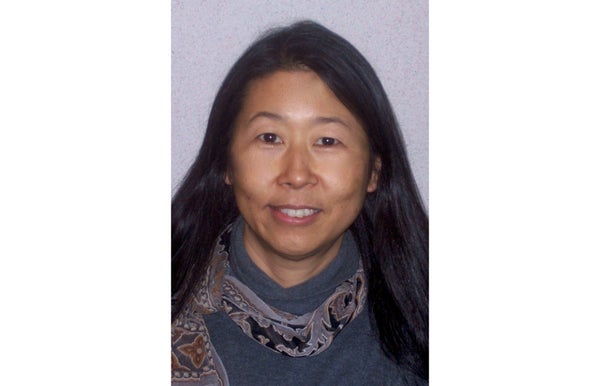This article was published in Scientific American’s former blog network and reflects the views of the author, not necessarily those of Scientific American
In this episode of My Favorite Theorem, we had the pleasure of talking with Eriko Hironaka. She worked at Florida State University for almost 20 years before starting a position as a senior editor in the book program of the American Mathematical Society (AMS). You can listen to the episode here or at kpknudson.com.
The math in this episode is a little more technical than the episodes we’ve had in the past because Dr. Hironaka chose one of her own theorems, the first one she ever proved, as her favorite theorem. This episode is one of my favorites (I know; it’s like choosing a favorite child, but I said “one of,” so it’s OK) because of the way Dr. Hironaka opened up about her doubts during graduate school and the way this theorem helped her feel like she could belong in the mathematical community.
On supporting science journalism
If you're enjoying this article, consider supporting our award-winning journalism by subscribing. By purchasing a subscription you are helping to ensure the future of impactful stories about the discoveries and ideas shaping our world today.
The theorem lives in the intersection between the fields of topology and algebraic geometry. Topology is the study of shapes up to smooth deformation—roughly speaking, if you can squish one shape into another without tearing or gluing, the two shapes are topologically equivalent. Algebraic geometry generally deals with zero sets of polynomials, which are much more rigid than the objects in topology. As Dr. Hironaka describes, her work is part of a branch of math initiated by Oscar Zariski, who started using topology to study questions in algebraic geometry in the first half of the twentieth century.
Dr. Hironaka’s theorem concerns the first Betti numbers of families of spaces. The Betti numbers of a space give you some information roughly about how hole-y a space is in each dimension, and the first Betti number is the one-dimensional hole-y-ness. That description is deliberately vague, but to give an idea of what it means, the first Betti number of a sphere (the hollow surface, like the skin of a beach ball) is 0, of a cylinder is 1, and of a torus (the glaze of a donut or the tube in a tire) is 2. If you squint, you can kind of see how a sphere doesn’t really have any circle-y holes, a cylinder basically has one, and a torus basically has two. (If you’re curious about what mathematicians mean when they talk about holes and their dimensions, I’ve got a blog post for you.)
The spaces Dr. Hironaka looked at were much more complicated than spheres and cylinders. She looked at what I kind of think of as towers of related spaces, each one of which can cover the one below it in interesting ways. She showed that for certain towers of spaces, the Betti numbers behave in an interesting periodic way. The math journal article detailing her findings is available from Springer or on in non-paywalled form at her website. (It’s the 1992 publication.)
In our first ever musical pairing on the show, Dr. Hironaka chose to pair her theorem with Stravinsky’s Firebird Suite. You really should listen to the episode to hear her describe the way the contours of the suite lined up with the contours of the theorem-proving process for her. We sampled a bit of the suite in the episode, and you can listen to the full version here.
In addition to her favorite theorem and the excellent music of Stravinsky, we talked about what exactly her job is now in the AMS book program and a little bit about what it was like to grow up with a Fields medalist (her father Heisuke Hironaka) as a parent.
You can get a little glimpse into some of the things Dr. Hironaka thinks about as an editor in the AMS books program at the Book Ends blog. You can find more information about the mathematicians and theorems featured in this podcast, along with other delightful mathematical treats, at kpknudson.com and here at Roots of Unity. A transcript is available here. You can subscribe and review the podcast on iTunes and other podcast delivery systems. We love to hear from our listeners, so please drop us a line at myfavoritetheorem@gmail.com. Kevin Knudson’s handle on Twitter is @niveknosdunk, and mine is @evelynjlamb. The show itself also has a Twitter feed: @myfavethm and a Facebook page. Join us next time to learn another fascinating piece of mathematics.
Previously on My Favorite Theorem:
Episode 0: Your hosts' favorite theorems Episode 1: Amie Wilkinson’s favorite theorem Episode 2: Dave Richeson's favorite theorem Episode 3: Emille Davie Lawrence's favorite theorem Episode 4: Jordan Ellenberg's favorite theorem Episode 5: Dusa McDuff's favorite theorem
